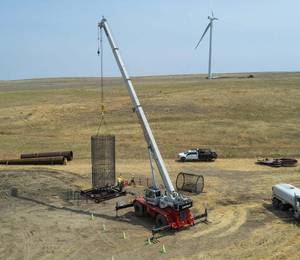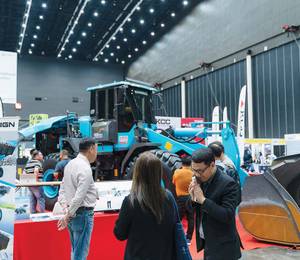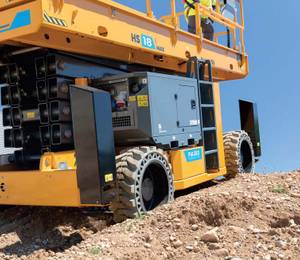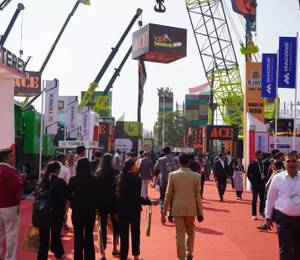Two Comansa 21LC660 tower cranes have been working on the construction of Cebu-Cordova Link Expressway (CCLEX), which will connect Cebu City and Mactan Island in the Philippines. This major project aims to alleviate the heavy traffic that currently passes through the existing two bridges.
The CCLEX is set to become a new landmark in the country, awarded by CCLEC (Cebu Cordova Link Expressway Corporation), a subsidiary of MPTC (Metro Pacific Tollways Corporation), to Cebu Link Joint Venture (CLJV) that comprises Acciona, First Balfour and D.M. Consunji Inc (DMCI).
Versatile cranes with modular system
In order to meet the specific requirements of the project, the Comansa 21LC660 flat-top cranes (36-t version) from the 2100 series were selected. This crane model has been designed for maximum performance in projects involving particularly heavy loads, like bridge construction. The 80-m-long booms have also made it possible to provide a wide and accessible perimeter on-site surrounding the two main pylons on which the bridge was built.
The project was divided into three sections: the Cordova viaduct and causeway; the cable-stayed bridge, which is the main bridge; and the access viaducts on Cebu City side. Comansa’s tower cranes have been in operation to construct the main (cable-stayed) bridge. When completed, it will span approximately 650 m and be supported by two towers of 150 m height each.
Tower 1 is located a distance from the coast and is not accessible by land, so the tower crane had to be erected with a crawler crane mounted on a boat. Tower 2 is also far from the coast, but in this case a temporary island/dock has been built, thus allowing materials to be delivered for the bridge construction. The tower crane was erected with a crawler crane from this provisional island.
The modular system used by Comansa, with its compact pieces, played an important role in this project as it enabled the tower cranes to be set up within such “complicated circumstances.”
The cranes carried out several tasks, including lifting heavy equipment – such as mobile cranes, boom trucks and concrete pumps weighing up to 32 t – onto the deck during the construction phase.
Throughout concreting operations, the cranes helped to lift 5 cu m concrete buckets (weighing about 12 t) from the pile cap onto the deck and move them in a 40-m working radius, in order to feed the static pumps used for delivering concrete to the segment being built.
Other tasks performed by the cranes include lifting and placing pylon formwork and prefabricated pylon rebar cages (about 8 t), lifting rebar bundles for structural works, anchor boxes lifting and installation for the stay cables, and stay cable installation.
The ability to automatically change reeving, combined with the Power Lift system, allowed the cranes to easily adapt to a wide range of loading manoeuvres, handling different volumes and weights.
Given the bridge’s location in a country that is often affected by typhoons during the rainy season, the tower cranes were designed to handle winds of up to 250 km/hr. In addition, due to their height and proximity to the Mactan-Cebu Airport, both the cranes and the booms were fitted with safety lights in compliance with civil aviation regulations.
According to Comansa, the cranes were struck by lightning during construction, “but thanks to their lightning protection, the operators were unharmed and the tower cranes were able to continue working after undergoing mechanical and electrical checks,” which was assisted by the Comansa technical team through its online support.
The CCLEX is scheduled for opening in the first quarter of 2022.
Related News:
Cebu-Cordova Link Expressway in full swing, featuring giant crosses
















